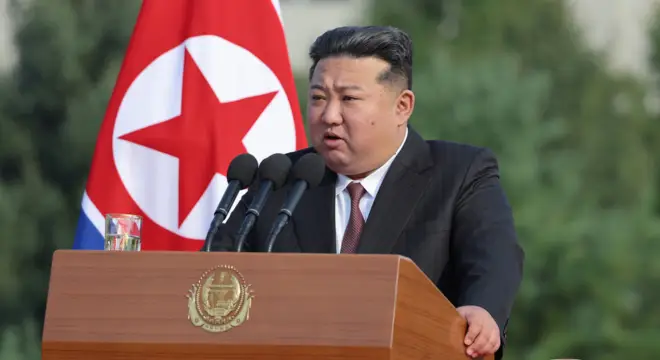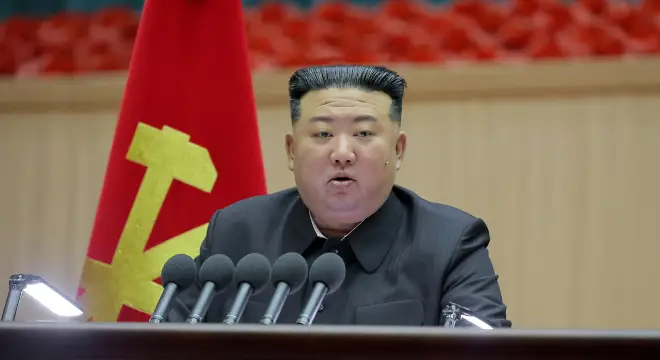What is North Korea’s reaction to the growing presence of US and South Korean forces near its borders? What does Kim Jong Un mean when he talks about deploying “special assets,” and how could they impact regional security? How serious is the threat posed by North Korea’s expanding nuclear and missile capabilities? And finally, what might the upcoming military parade reveal about Pyongyang’s strategic intentions?
These are pressing questions as tensions on the Korean Peninsula continue to escalate. North Korea’s recent statements, combined with its military exhibitions and parade preparations, signal a significant development in the country’s defense posture.
Let’s explore the growing tensions, strategic implications, and North Korea’s military plans in detail.
Background on North Korea-US-South Korea Relations
The Korean Peninsula has been a focal point of military tension for decades. The Korean War, which began in 1950 and ended with an armistice in 1953, technically left North and South Korea in a state of war. Since then, the United States has maintained a strong military alliance with South Korea, stationing approximately 28,500 troops in the country to deter aggression from the North.
Over the years, joint military exercises between the US and South Korea—sometimes including Japan—have been a recurring point of contention. These drills, which aim to strengthen defense capabilities and interoperability, are perceived by Pyongyang as rehearsals for invasion. North Korea has repeatedly voiced strong opposition, calling these exercises provocative and threatening to regional peace.
Kim Jong Un’s Recent Statements
On October 4, 2025, Kim Jong Un addressed a military exhibition titled Defense Development 2025 in the capital of Pyongyang. During his speech to the audience, he criticized the increased US military forces in South Korea and indicated the US and South Korea were exacerbating security threats in the region. He stressed the speed-up of North Korea’s arms development was in order to maintain balance of power and defend national sovereignty.
The main point of his comments was the commitment to deploy “special assets” to designate targets. While Kim did not delineate what those military assets were, analysts speculate these could include advanced missile systems, unmanned aerial vehicles (drones), and other technological military assets. His remarks also reaffirmed North Korea’s position as an irreversible nuclear state, stressing again that Pyongyang was not giving up its nuclear weapons under any circumstance.

The comments made during his address represent a form of messaging for domestical and international audiences. For the domestic audience, a demonstration of strength and control, and to the international audience, a warning to potential military adversaries against escalation to near the North Korean border.
Military Hardware and Capabilities
The military show exhibited a broad range of North Korea’s weapons systems, including ICBM-class ballistic missiles, cruise missiles, hypersonic missiles, and drones. The event illustrated North Korea’s ability to strike targets locally and potentially intercontinental targets.
In addition to missiles, North Korea has reportedly increased the amount of highly enriched uranium, which may allow for an increase in development of nuclear weapons systems. Analysts predict that the event could show the new systems from North Korea, including the Hwasong-20 ICBM, at the Workers’ Party of Korea’s 80th Anniversary Parade on October 10. Some expect a North Korean test of a weapons platform, coinciding with the anniversary parade, that could indicate real technology advancements and evidence of North Korea’s capabilities.
Military parades serve multiple functions by demonstrating advancements in military weaponry; demonstrating willingness to defends from threats, potential or real, by adversaries or all other countries; and/or delivering a political message to allies and foes.
Strategic Implications for Regional Security
The positioning of North Korea’s military assets and continuing weapons development programs have grave implications for regional security. South Korea, Japan, and neighboring nations should account for the possibility of precision strikes from a range of missile systems.
US-South Korea militaries are conducting more advanced and frequent joint exercise assessments. North Korea has drawn a direct connection between the joint exercises and additional militarization, creating a cycle of escalation. The alliance of US and South Korea is meant to enhance deterrence and operational readiness as evidenced in these joint exercise events, that generally include air, maritime, and land components.
North Korea’s escalating ties with Russia and China create even more instability in the current environment. Reports suggest Pyongyang has provided troops and artillery in support of the fight between Russia and Ukraine, further strengthening military alliances and potentially giving some notion of backing and support in the event of engagement. China’s military cooperation and diplomatic support, too, enhances North Korean influence, complicating the security situation in the region.

The Role of Military Parades and Public Messaging
In North Korea, military parades are more than just ceremonial events; they serve as a strategic device for deterrence and messaging. The military parade on October 10 will celebrate the 80th anniversary of the Workers’ Party of Korea (WPK) and provide another opportunity to showcase military capabilities to domestic and international audiences.
In prior military parades, the North Korean government used the event to display new weapons systems and military technical developments, which also sought to reinforce the image of a strong, disciplined military. One goal of military parades is to foster a sense of national pride and promote the image of a military readiness to defend against threats from external actors.
The current international and national-security environment is rife with threats and confrontation from Kim’s perspective, and showcasing advanced missile systems, drones, and other strategic equipment represents another way to deter adversaries.
Expert Analysis and International Response
US and South Korean military officials have been closely observing North Korean actions and have recognized increased troop movements, increased parade rehearsals, and weapons being deployed. Analysts have noted that the combination of nuclear weapons and missile technology increases the stakes associated in outcomes of any possible conflict.
Western experts acknowledge that North Korea’s military is underpinned by deterrence and signaling. In activations of readiness to deploy “special asset,” it hopes to use the on-going known development in hypersonic weapons and other emerging systems to signal its objectives during diplomatic negotiations while establishing a strong identity as a nuclear-capable state.
International responses have been relatively cautious despite reputations around sanctions/adverse developments like missile launches continuing. Sanctions efforts and diplomatic leverage always pending, it is a very weak solution to question North Korea’s position on its nuclear weapons or missile programs. The uncertainty facing peaceful relations on the Korean peninsula, with the response of the US, South Korea and allies, is fragile at this time.
Conclusion
North Korea’s recent military developments along with statements and actions of Kim Jong Un manifest a troubling development in regional tensions. Through its development of “special capabilities,” a fast-paced acceleration of its weapons development, and preparations for a tenth anniversary parade of the Korean War veterans, Pyongyang effectively declares not only its capabilities but also its intent to uphold its sovereignty and respond to perceived threats.
The Korean Peninsula remains a complicated security situation with significant implications and stakes for the United States, South Korea, Japan, and other regional actors. As North Korea strengthens its military power, nuclear weapons, and alliances with Russia and China, these involved parties need to make decisions with difficult competing interests about diplomacy, deterrence, and strategic pre-planning.
As the situation becomes more tense and Pyongyang prepares for its May Day military parade, the world watches with interest and anticipation – what next for the Korean Peninsula?


